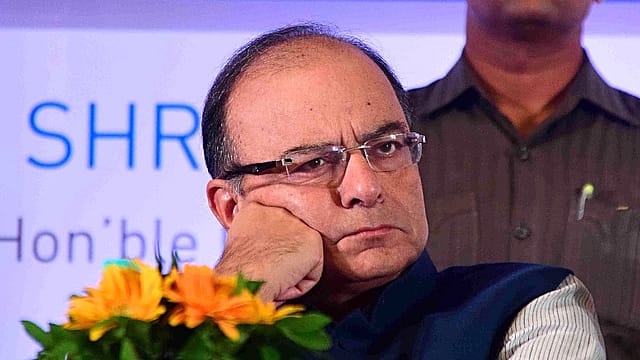Concerns over India’s ballooning fiscal deficit
ADVERTISEMENT

The good news first: India has reclaimed its fastest-growing economy title from China, with a 7.2% growth in the gross domestic product for the quarter ended December 2017. The not so good news – fiscal deficit soared to Rs 6.77 lakh crore at the end of January, touching 113.7 % of the revised target for the entire fiscal.
Finance minister Arun Jaitley, in his budget for 2018-19, had revised the fiscal deficit target to 3.5% of the GDP in FY 2018 and 3.3% in FY 2019. The revised target for 2018 was Rs 5.95 lakh crore.
For the 10 months of the current fiscal - April 2017 to January 2018, the total receipts stood at Rs 11.63 lakh crore, wherein net tax collection was Rs. 9.7 lakh crore. The government garnered Rs.1.2 lakh crore through non tax revenue, and Rs 6.8 lakh crore of non debt capital receipts were booked in the form of recovery of loans (Rs 12,156 crore) and disinvestment of PSUs (Rs 55,543 crore).
While the government collected total receipts worth 71.7% of the revised estimates for 2017-18, the total expenditure incurred in these 10 months added up to Rs.18.39 lakh crore, which is 83.0% of the revised estimates for 2017-18. The mismatch leads to a fiscal deficit of Rs 6.77 lakh crore.
The 20% year on year rise in the fiscal deficit as well as the 14% overshooting relative to the revised estimate of Rs. 5.90,000 crore for the 10 months of FY2018, is a cause for some concern, says Aditi Nayar, Principal Economist at rating agency ICRA.
December 2025
The annual Fortune 500 India list, the definitive compendium of corporate performance, is out. This year, the cumulative revenue of the Fortune 500 India companies has breached $2 trillion for the first time. Plus, find out which are the Best B-schools in India.
Nayar says that revenue receipts tend to rise significantly in the last quarter of the fiscal due to the normal back-ended pattern of tax inflows. She expects disinvestment flows to increase in the current quarter – benefiting from the completion of the HPCL-ONGC transaction. However, “there is a risk that the target for dividends and profits may not be achieved,” she says.
“Even as there is considerable headroom for revenue spending in the last two months of this fiscal, capital spending has already reached 97% of the FY2018 revised estimates,” adds Nayar. “In particular, loans disbursed up to January 2018 are nearly two and a half times higher than the FY2018 revised estimates.”
ICRA estimates that capital expenditure and net lending would need to contract by 89% during February-March on a year on year basis, to remain within the revised estimates for such spending, which may curtail the pace of economic growth in that quarter.
“In the event that some short term loans such as working capital loans are repaid in the last two months of FY2018, some headroom may emerge for additional capital spending,” Nayar says.
Earlier this month, in its monetary policy committee (MPC) meeting, the Reserve Bank of India had flagged concerns around fiscal slippage impinging on the inflation outlook.
Apart from the direct impact on inflation, fiscal slippage has broader macro-financial implications, notably on economy-wide costs of borrowing which are already rising. “This may feed into inflation,” the RBI had said.
In the recently released minutes of the MPC meeting, Ravindra Dholakia Professor, Indian Institute of Management, Ahmedabad and MPC member highlighted that inflation trends need to be watched carefully in the context of crude oil prices.
“Although the base effects are going to be favourable over the next 3-4 months, the oil price movements can create uncertainties and serious upside risks,” Dholakia had said. “The fiscal space to accommodate future higher oil price shocks seems to be absent given the slippage in the union budget for 2018-19.”
There might be little to cheer over the 7.2% GDP growth as fiscal deficit and inflation propelled challenges will soon start rearing their heads up.
